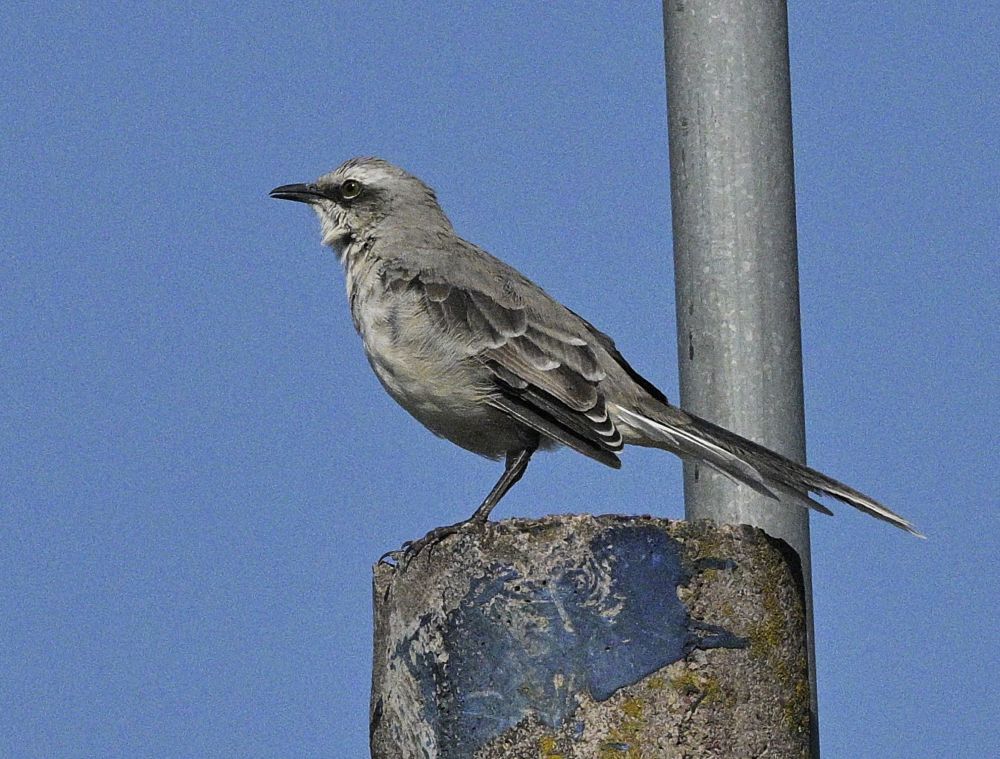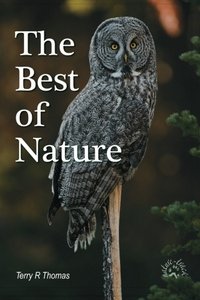Lumpers and Splitters

A lumper would say that this tropical mockingbird of Ecuador should be grouped with the northern mockingbird of North America and just be called a mockingbird. A splitter would keep the two separate and might look for other differences to justify an additional split. Which way would you lean?
When it comes time to organize the many wildlife images that I make, I often agonize over how to classify them. Long ago I decided to use species, for example: a photo of a robin would be filed under Photos/Birds/Songbirds/Robins. Simple enough. However, what if the image contains other birds, a robin on a nest, or represents a specific habitat, includes scenery or any number of other iterations that might be just as important as species? Should I then file it under habitat, nature, species interactions or what? With digital, this has become somewhat easier as I can, with a few keystrokes, file it in any number of locations if I am willing to give up the hard drive space. When I was shooting film and had only one image to file, this was a difficult choice.
That is largely because, by personality, I am a splitter. That means that I see differences between things and try to classify them all. My opposite would be a lumper, who tends to see how things are similar and groups them as such.
These terms, lumper and splitter (short for hair-splitter), have been in existence in natural history since 1845 when they were first used by naturalist Edward Newman who wrote, "The time has arrived for discarding imaginary species, and the duty of doing this is as imperative as the admission of new ones when such are really discovered. The talents described under the respective names of 'hair-splitting' and 'lumping' are unquestionably yielding their power to the mightier power of Truth." He was talking about defining species and subscribed to neither lumping or splitting.
One hundred years later, George G. Simpson wrote in his book, The Principles of Classification and a Classification of Mammals: “... splitters make very small units – their critics say that if they can tell two animals apart, they place them in different genera ... and if they cannot tell them apart, they place them in different species. ... Lumpers make large units – their critics say that if a carnivore is neither a dog nor a bear, they call it a cat.”
It is easy to see that either method, carried to the extreme, can lead to either ridiculous and endless subdivisions of species or gross and meaningless aggradations ultimately leaving nothing below the Kingdom level.
In my mind though, I think a splitter suffers more. It can drive a splitter mad trying to classify plants and animals because there is such wide variation among individuals. When and where does one stop? A person who is a lumper just looks at the animal or plant and figuratively says, if it walks like a duck and quacks like a duck, it is a duck. What kind of duck doesn’t really matter.
Defining just what a species is would help both lumpers and splitters. Naturalists have struggled with a definition for hundreds of years. Finally, in 1942, naturalist Ernst Mayr suggested what was called the Biological Species Concept that in a nutshell stated that a species is a group of reproducing natural populations incapable of effectively mating with other such groups, and which inhabits a particular niche in nature. Thus, a cross between a horse and a donkey, known as a sterile mule, demonstrated that horses and donkeys are two different species.
While some naturalists argue that perhaps the whole species concept is unnecessary, in Mayr’s mind, “The term ‘species' refers to a concrete phenomenon of nature and this fact severely constrains the number and kinds of possible definitions.”
Today though, the Biological Species Concept is under fire. Not because it is wrong, but rather, new tools are showing it to be incomplete, and the war between lumpers and splitters may be definitively decided in the near future. More on that next time.
Help Idaho Wildlife
When we traveled across the state in October 2017, most of the vehicles we saw using the wildlife management areas did not have wildlife plates. Buying wildlife plates is a great way for non-hunters and hunters alike to support wildlife-based recreation like birding.
C'mon folks, let's help Idaho's wildlife by proudly buying and displaying a wildlife license plate on each of our vehicles!
See below for information on Idaho plates. Most states have wildlife plates so if you live outside Idaho, check with your state's wildlife department or vehicle licensing division for availability of state wildlife plates where you live.
And tell them that you heard about it from Nature-track.com!

Wildlife License Plates
Great news! as of 2024, there are three NEW designs for license plates. They still are bluebird, cutthroat trout and elk, but they are beautiful.
Idaho Wildlife license plates provide essential funding that benefits the great diversity of native plants and wildlife that are not hunted, fished or trapped—over 10,000 species or 98% of Idaho’s species diversity. Game species that share the same habitats (such as elk, deer, antelope, sage-grouse, salmon, trout) also benefit from these specialty plates.
No state tax dollars are provided for wildlife diversity, conservation education and recreation programs. Neither are any revenues from the sale of hunting or fishing licenses spent on nongame species. Instead, these species depend on direct donations, federal grants, fundraising initiatives—and the Idaho Wildlife license plates.
Both my vehicles have Bluebird Plates. I prefer the bluebird because the nongame program gets 70 percent of the money from bluebird plates, but only 60 percent of the money from elk and trout plates - 10 percent of the money from elk plates supports wildlife disease monitoring and testing programs (to benefit the livestock industry) and 10 percent from cutthroat plates supports non-motorized boat access.
Incidentally, in 2014, the Idaho Legislature denied the Department of Fish and Game the ability to add new plates or even to change the name of the elk and cutthroat plates (very specific) to wildlife and fish plates, a move that would have allowed for changing images occasionally and generating more revenue. It would seem that they believe that we Idahoans don't want a well funded wildlife program.
I think it is time we let the Legislature know that Idahoan support wildlife funding and that we would like to see these generic plates come to fruition.

"WOW. What a phenomenal piece you wrote. You are amazing." Jennifer Jackson
That is embarrassing, but actually a fairly typical response to my nature essays. Since The Best of Nature is created from the very best of 16 years of these nature essays published weekly in the Idaho Falls Post Register (online readership 70,000), it is a fine read. It covers a wide variety of topics including humorous glimpses of nature, philosophy, natural history, and conservation. Readers praise the style, breadth of subject matter and my ability to communicate complex and emotional topics in a relaxed and understandable manner.
Everyone can find something to love in this book. From teenagers to octogenarians, from the coffee shop to the school room, these nature essays are widely read and enjoyed.
Some of the essays here are my personal favorites, others seemed to strike a chord with readers. Most have an important message or lesson that will resonate with you. They are written with a goal to simultaneously entertain and educate about the wonderful workings of nature. Some will make you laugh out loud and others will bring a tear to the eye and warm your heart.
Readers Write:
"You hit a home run with your article on, Big Questions in Nature. It should be required reading for everyone who has lost touch with nature...great job!" Joe Chapman
"We enjoyed your column, Bloom Where Planted. Some of the best writing yet. The Post Register is fortunate to have your weekly columns." Lou Griffin.
To read more and to order a copy, click here or get the Kindle version
Copies are also available at:
Post Register
Island Park Builders Supply (upstairs)
Barnes and Noble in Idaho Falls
Harriman State Park, Island Park
Museum of Idaho
Valley Books, Jackson Wyoming
Avocet Corner Bookstore, Bear River National Wildlife Refuge, Brigham City, Utah
Craters of the Moon National Monument Bookstore, Arco, Idaho